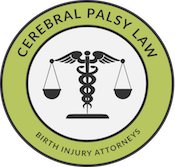What Is a C-Section?
A C-Section (Cesarean section) is a surgical operation in which a medical professional delivers a baby through an incision in the mother’s abdomen and uterus. C-section deliveries are often recommended when vaginal delivery poses risks to the mother or child. Medical professionals and expectant mothers may pre-plan a Cesarean delivery when certain risk factors are present. In other cases, dangerous complications arising during labor and delivery necessitate the performance of an emergency C-section operation. When risk factors are present, C-section deliveries can prevent a number of dangerous maternal and fetal injuries, some of which include hypoxic ischemic encephalopathy (HIE), fetal death, maternal hemorrhaging, intellectual disabilities, developmental delays, cerebral palsy, and infant brain damage.
When medical professionals fail to quickly and properly perform C-sections—or when they fail to perform them altogether—it is considered negligence. When medical negligence results in an injury to the mother or the child, it is medical malpractice and both patients are potentially entitled to compensation from a medical malpractice lawsuit.
Throughout this page we’ll review some of the basic causes, risk factors, injuries, and instances of medical malpractice associated with Cesarean delivery. If you or your loved one sustained permanent injuries from a C-section complication, we encourage you to reach out for legal help. Our Michigan birth trauma attorneys have decades of experience helping clients understand their loved ones’ injuries and receive the compensation necessary to cover health care, rehabilitation, and lifestyle supports. Contact Michigan Cerebral Palsy Attorneys today for a free legal consultation—
Call us toll-free at (888) 592-1857
Fill out our online contact form here
When Are C-Section Deliveries Safer than Vaginal Deliveries?
Cesarean (C-section) deliveries are generally performed when vaginal delivery is dangerous to the mother or child. The following conditions, complications, and situations often necessitate C-section delivery:
- Instances of fetal oxygen deprivation require C-section delivery. When fetal distress is present, medical professionals must quickly order and perform a C-section operation in order to prevent brain damage, hypoxic ischemic encephalopathy, and other dangerous injuries. Some of the many situations and complications that may cause fetal oxygen deprivation during delivery include the following:
- Head trauma: Intracranial hemorrhages, cranial damage from labor assistance tools such as forceps and vacuum extractors, shoulder dystocia, size incompatibilities between the mother and child, abnormal fetal presentation, and other complications may injure the baby’s head and interfere with oxygen intake.
- Placental issues such as placenta previa, placental abruption, and placental insufficiency may limit the passage of oxygenated blood from the mother to the baby.
- Uterine rupture
- Preeclampsia (maternal high blood pressure during pregnancy)
- Anesthesia mistakes
- Umbilical cord problems such as nuchal cords, umbilical cord prolapse, short umbilical cords, or umbilical cord compression
- Uterine hyperstimulation from the misuse of Pitocin or Cytotec
- Premature delivery
- Premature rupture of membranes (PROM)
- Many others
- Umbilical cord problems: Nuchal cords, cord prolapse, umbilical cord compression, and short umbilical cord length are dangerous labor and delivery complications that, when mishandled, often lead to fetal oxygen deprivation, brain damage, hypoxic ischemic encephalopathy (birth asphyxia), and other lasting injuries. Experts often recommend C-section delivery when umbilical cord complications are present.
- Multiple gestations: When the mother is pregnant with twins, triplets, or other multiples, the babies are at a greater risk for birth complications.
- Maternal infections (HIV, herpes, and others) that can spread to the fetus during labor and delivery require C-section operations.
- Malpresentation: When the baby is not in the standard vertex presentation, C-section delivery is the recommended method of delivery. Abnormal presentations may include breech presentation, transverse presentation, and face presentation.
- Stalled labor: When labor fails to progress, the baby is at risk for oxygen deprivation and dangerous injuries such as hypoxic ischemic encephalopathy. According to the American College of Obstetricians and Gynecologists (ACOG), it is the standard of care to perform a C-section delivery within 30 minutes of the decision to do the surgery. However, when certain emergency complications are present, C-sections should be performed sooner. When non-reassuring fetal heart tracings are present, medical professionals must order a C-section.
- Uterine rupture occurs when the uterine partially or fully tears. This labor and delivery emergency may significantly diminish the flow of oxygenated blood to the baby, ultimately putting the baby at great risk for brain damage, oxygen deprivation, and permanent injury. It is the standard of care to order and perform emergency C-sections in cases of uterine rupture.
- Maternal health issues related to blood pressure and cardiac functioning necessitate C-section delivery.
- Placental complications (placental previa, placental abruption, and placental insufficiency) necessitate the performance of a C-section delivery in order to prevent fetal oxygen deprivation, maternal hemorrhaging, and other dangerous complications.
C-Section Complications
Which Injuries Are Associated with C-Sections?
Failing to quickly and properly perform an emergency C-section operation may result in a host of severe complications and consequences for the mother and child. Mothers risk dangerous injuries including hemorrhaging, uterine rupture, and seizures, while infants risk oxygen deprivation, brain damage, hypoxic ischemic encephalopathy, intellectual disabilities, developmental delays, cerebral palsy (CP), Erb’s palsy, periventricular leukomalacia (PVL), seizure disorders, and more.
How Do These Injuries Occur?
There is a delay in the performance of an emergency C-section operation:
- Experts agree that medical professionals must perform a C-section delivery within 30 minutes of the time it is ordered. However, medical professionals must perform C-sections faster when emergency complications are present—in cases of complete cord compression, bradycardia, placental abruption, or other emergency conditions, C-sections should be performed before or within a ten to eighteen minute time frame.
A medical professional fails to offer and/or perform a C-section operation:
- Birthing units with inadequate C-section operation facilities and/or personnel commonly lead to devastating C-section injuries and consequences. According to the modern standard of care, labor and delivery units must provide proper access to C-section operations—medical professionals must ensure the appropriate facilities, tools, and personnel are accessible before labor and delivery begins. In case of emergency, birthing facilities must be close enough to C-section operation facilities in order to perform C-section deliveries in the standard time frame.
- Another common cause of C-section injuries and complications is fetal heart monitoring mistakes. Birthing facilities must have functional fetal heart monitors and professionals with the ability to accurately detect non-reassuring fetal heart tracings. Because fetal heart monitors signify when a baby is experiencing oxygen deprivation, the failure to accurately read fetal distress signals often results in serious brain injury and lifelong disabilities.
Legal Help for C-Section Complications
Michigan Lawyers Handling Cases Related to Cerebral Palsy from C-Section Mistakes
 If you or your loved one suffered permanent injuries from a mishandled C-section, you may be entitled to compensation. If you’re not sure about the cause of the injuries, we encourage you to reach out for a free legal consultation—our experienced birth trauma lawyers will answer your questions and determine if you are eligible for a medical malpractice case. Should we take your case, we will not charge you until we win or settle.
If you or your loved one suffered permanent injuries from a mishandled C-section, you may be entitled to compensation. If you’re not sure about the cause of the injuries, we encourage you to reach out for a free legal consultation—our experienced birth trauma lawyers will answer your questions and determine if you are eligible for a medical malpractice case. Should we take your case, we will not charge you until we win or settle.
To talk to our legal team or to begin your free case review, please call us toll-free at fill out this online contact form.
Sources:
- Thacker SB, Stroup DF, Peterson HB. Efficacy and safety of intrapartum electronic fetal monitoring: an update. Obstet Gynecol 1995; 86:613.
- MacDonald D, Grant A, Sheridan-Pereira M, et al. The Dublin randomized controlled trial of intrapartum fetal heart rate monitoring. Am J Obstet Gynecol 1985; 152:524.
- East CE, Brennecke SP, King JF, et al. The effect of intrapartum fetal pulse oximetry, in the presence of a nonreassuring fetal heart rate pattern, on operative delivery rates: a multicenter, randomized, controlled trial (the FOREMOST trial). Am J Obstet Gynecol 2006; 194:606.e1.
- Phelan JP, Kim JO. Fetal heart rate observations in the brain-damaged infant. Semin Perinatol 2000; 24:221.
- Benson RC, Shubeck F, Deutschberger J, et al. Fetal heart rate as a predictor of fetal distress. A report from the collaborative project. Obstet Gynecol 1968; 32:259.
- WALKER N. The case for conservatism in management of foetal distress. Br Med J 1959; 2:1221.
- Freeman RK. Problems with intrapartum fetal heart rate monitoring interpretation and patient management. Obstet Gynecol 2002; 100:813.
- Graham EM, Petersen SM, Christo DK, Fox HE. Intrapartum electronic fetal he art rate monitoring and the prevention of perinatal brain injury. Obstet Gynecol 2006; 108:656.
- Young BK. Monitoring the fetal heart: a continuing controversy. Obstet Gynecol Surv 1995; 50:699.
- Vintzileos AM, Nochimson DJ, Antsaklis A, et al. Comparison of intrapartum electronic fetal heart rate monitoring versus intermittent auscultation in detecting fetal acidemia at birth. Am J Obstet Gynecol 1995; 173:1021.
- Alfirevic Z, Devane D, Gyte GM. Continuous cardiotocography (CTG) as a form of electronic fetal monitoring (EFM) for fetal assessment during labour. Cochrane Database Syst Rev 2006; :CD006066.
- Larma JD, Silva AM, Holcroft CJ, et al. Intrapartum electronic fetal heart rate monitoring and the identification of metabolic acidosis and hypoxic-ischemic encephalopathy. Am J Obstet Gynecol 2007; 197:301.e1.
- Bloom SL, Spong CY, Thom E, et al. Fetal pulse oximetry and cesarean delivery. N Engl J Med 2006; 355:2195.
- Vintzileos AM, Nochimson DJ, Guzman ER, et al. Intrapartum electronic fetal heart rate monitoring versus intermittent auscultation: a meta-analysis. Obstet Gynecol 1995; 85:149.
- Nelson KB, Dambrosia JM, Ting TY, Grether JK. Uncertain value of electronic fetal monitoring in predicting cerebral palsy. N Engl J Med 1996; 334:613.
- American College of Obstetricians and Gynecologists. ACOG Practice Bulletin No. 106: Intrapartum fetal heart rate monitoring: nomenclature, interpretation, and general management principles. Obstet Gynecol 2009; 114:192.
